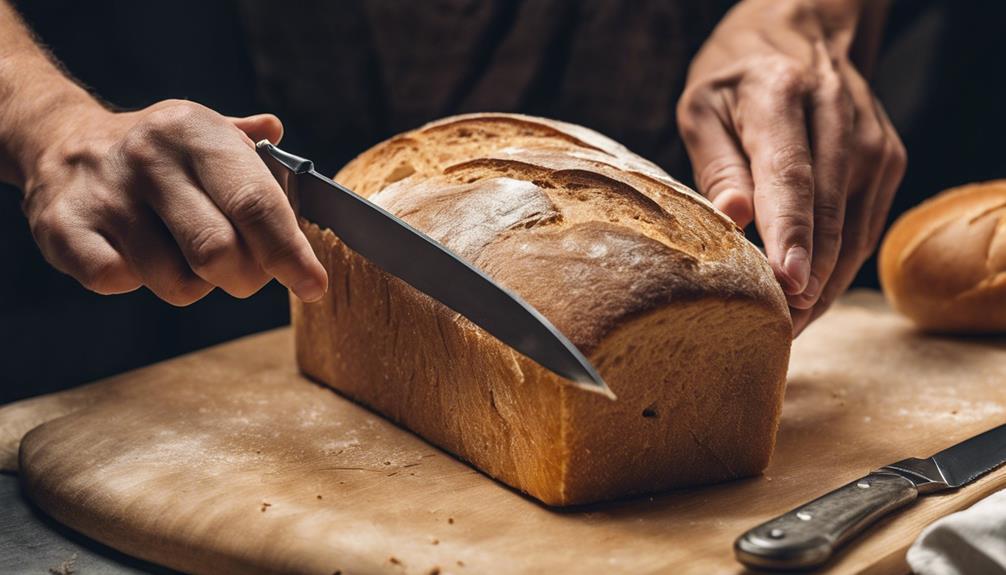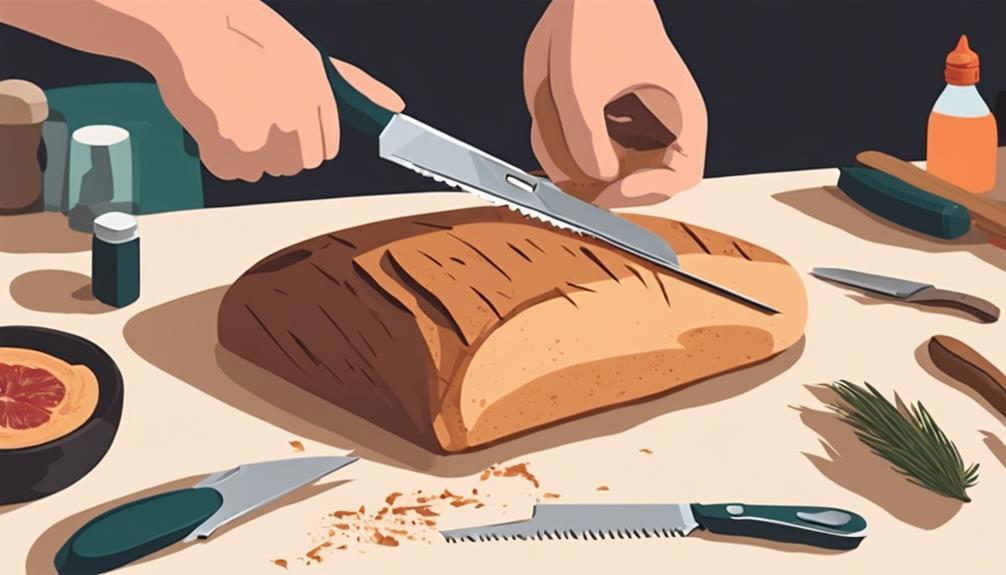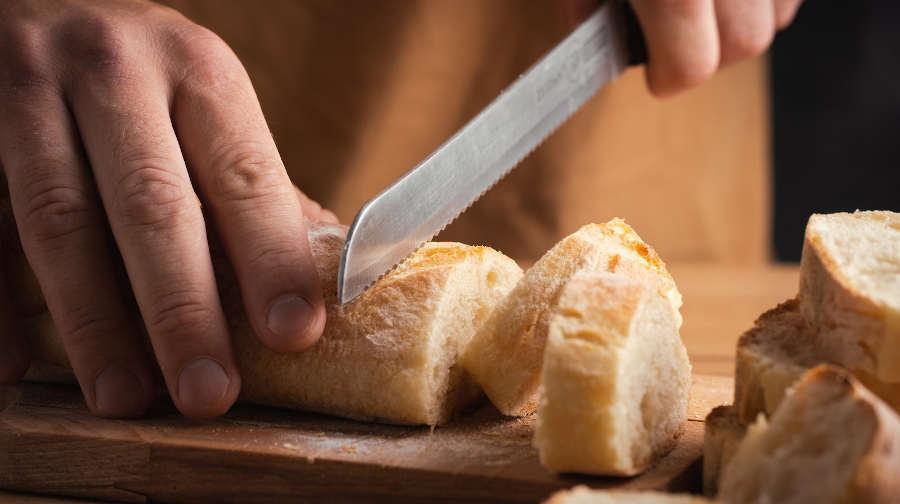Imagine this scenario: you’re slicing a loaf of crusty bread with your trusty bread knife, and suddenly, your hand slips, grazing your skin. Can a bread knife cut skin?
The answer is not as straightforward as you might think. Stay tuned to uncover the surprising truth behind the sharpness of bread knives and their potential impact on human skin.
Key Takeaways
- Blade sharpness and design influence skin-cutting ability.
- Understanding skin anatomy is crucial for safe testing.
- Proper technique and precautions reduce injury risks.
- Prioritize safety with secure grip, even pressure, and prompt wound care.
Sharpness of Bread Knives

If you’re wondering about the sharpness of bread knives, understanding how it affects their cutting ability is important. The blade material plays a significant role in determining sharpness. High-quality stainless steel blades are commonly used for bread knives as they maintain sharpness for longer periods.
Additionally, some knives have serrated edges, which are ideal for cutting through tough crusts without crushing the bread. When it comes to handle design, ergonomic handles are important for a comfortable grip and precise control. A well-designed handle can prevent slippage during use, enhancing safety.
Anatomy of Human Skin

Understanding the structure of human skin is important for grasping its function and significance in protecting the body. Human skin consists of three primary layers: the epidermis, dermis, and hypodermis.
The epidermis is the outermost layer, providing a vital barrier and housing the pigment-producing melanocytes. Beneath the epidermis lies the dermis, containing blood vessels, nerve endings, and hair follicles. The deepest layer, the hypodermis, is primarily composed of fat and connective tissue. Skin plays a vital role in protecting the body from external threats, regulating temperature, and sensing the environment.
When injured, the skin’s wound healing process begins, involving inflammation, tissue formation, and remodeling to restore its integrity. Understanding these skin layers and wound healing mechanisms is essential for appreciating the skin’s resilience and protective functions.
Testing Bread Knife on Skin
To explore the capability of a bread knife to cut skin, it’s important to think about its design and sharpness to the layers and composition of human skin. When testing a bread knife on the skin, consider the following:
- Skin safety: Prioritize safety when conducting any experiments involving the use of sharp objects near the skin.
- Blade sharpness: The sharpness of the bread knife will have a major impact on its ability to cut through skin effectively.
- Technique: Proper technique is vital to minimize the risk of injury when testing the bread knife on the skin.
Safety Precautions to Consider
Guarantee your hands are steady and secure the object being cut before proceeding with any slicing using a bread knife. When handling a sharp bread knife, always maintain a firm grip on the handle and apply even pressure while cutting to prevent accidental slips.
Prioritize knife safety by ensuring the blade is sharp to minimize the risk of it slipping and causing injury. Additionally, always cut away from your body and keep your fingers tucked in to avoid any potential accidents.
In the event of a minor cut, promptly clean the wound with soap and water, apply a sterile bandage, and monitor for signs of infection. Remember, proper knife handling and being prepared with basic first aid knowledge are essential for a safe slicing experience.
Alternatives to Using Bread Knife

Consider using a serrated kitchen knife as an alternative to a bread knife for cutting through tough crusts or delicate pastries. When opting for a different knife, remember to prioritize kitchen safety and maintain your knives properly.
Here are some important points to keep in mind:
- Kitchen Safety: Always guarantee your cutting surface is stable to prevent accidents.
- Knife Maintenance: Regularly sharpen your knives to maintain their effectiveness.
- Proper Grip: Hold the knife firmly but without excessive force to avoid slipping.
Conclusion
So, can a bread knife cut skin?
The answer is yes. With its sharp serrated edge, a bread knife can easily slice through the layers of human skin.
Studies have shown that a bread knife can cut through skin with a force as low as 5 pounds of pressure.
Remember to always handle sharp objects with caution and consider safer alternatives for cutting tasks involving the skin.
Stay safe and be mindful of the tools you use.

